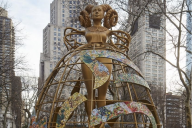You have /5 articles left.
Sign up for a free account or log in.
Market composition can't be blamed for the variation of racial and ethnic representation among students by type of institution, according to a report from the Urban Institute, a nonprofit research organization.
The report determined how different racial and ethnic groups were over- or underrepresented at a college by comparing its demographics with those of the surrounding area. The report then grouped these findings by type of institution. A breakdown of representativeness at each federal aid-eligible institution is also available.
The research essentially rules out market composition as a reason for the gaps in representation between colleges.
The institute found that, in 2017, black and Hispanic students were underrepresented at more selective universities by more than five percentage points each. More selective universities, whether public or private, had similar levels of representation for most groups.
Black students were also overrepresented at for-profit colleges by 15 percentage points.
In contrast, white and Asian students were overrepresented at more selective colleges.
The report also looked back in time to compare data from 2009 to 2017. Some things have improved -- Hispanic students have gained representation at community colleges and less selective public colleges.
But black student representation has remained stagnant in all sectors, the report states. However, when looking at the data by region, they have gained representation in northeastern colleges.
The report also examines the representation of Native Americans and Pacific Islanders in states where they comprise at least 1 percent of the population.
In the 15 states where the Native American population meets this threshold, Native American students in 2017 were slightly overrepresented at public colleges, both selective and nonselective. They were also overrepresented at two-year colleges. They are slightly underrepresented at private nonprofit colleges and at more selective public institutions.
The report looked at two states where Pacific Islanders make up at least 1 percent of the population. In those states, Pacific Islander students are slightly underrepresented at public and private nonprofit colleges but increasingly overrepresented at four-year for-profit colleges.








